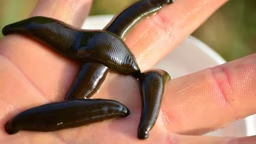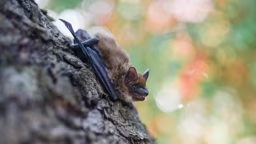During the spring and summer months, the diet of most songbirds is composed mainly of insects and spiders. These creatures are highly nutritious, abundant and, for the most part, easily captured.
During fall and winter, however, nonmigratory songbirds must shift their diets to fruits and seeds to survive. This is the time of year when winter bird-feeding enthusiasts should roll out the welcome mat and set the table.
During fall and winter, however, nonmigratory songbirds must shift their diets to fruits and seeds to survive. This is the time of year when winter bird-feeding enthusiasts should roll out the welcome mat and set the table.
The question is, what to serve for dinner? The shelves of many grocery and specialty bird-feeding stores are stocked with bags, buckets and cakes of many food types. You may find the task of selecting the best foods a bit overwhelming. One key to attracting a diversity of bird species is to provide a variety of food types – but that doesn’t mean you need to purchase one of everything on the shelf.
Which seed types should I provide? The seeds that attract the greatest number of species are black-oil sunflower. These seeds have a high meat-to-shell ratio, they are nutritious and high in fat, and their small size and thin shells make them easy for small birds to handle and crack. (Striped sunflower seeds are larger and have a thicker seed coat.)
Several studies show that this high-energy food is the flock-pleasing favorite of the majority of birds that visit feeders. In fact, it is often wasteful to fill a feeder with a standard mix – a blend of sunflower, milo, millet, oats, wheat, flax and buckwheat seeds – since your visitors may eat the prized sunflower seeds and leave the rest.
Of course, some birds do prefer other types of seeds. For example, blackbirds like corn, and doves like corn, milo and millet. The Cornell Lab of Ornithology’s Seed Preference Test found that most ground-feeding bird species prefer white millet or red milo to black-oil sunflower seed, but many tree-feeding species prefer the sunflower seed.
Refer to the chart above and experiment to see what your birds like best.
In the chart, “corn” refers to dried, whole-kernel corn, a favorite food for jays, pigeons, quail and pheasants. It is perhaps the least expensive of all birdseeds. Cracked corn, however, is easier to eat for blackbirds, finches and sparrows.
Millet comes in red and white varieties, but most birds prefer white proso millet over red.
Nijer, or thistle seed, is a delicacy for small finches such as goldfinches, siskins and redpolls. Because nijer seeds are small and expensive, it’s best to offer them in a special nijer feeder, which has tiny ports that prevent the seeds from spilling out.
Safflower is another seed that many birds like – most notably, cardinals. As an added bonus, it has limited appeal to squirrels and to non-native species such as starlings and house sparrows. Unsalted peanuts (shelled or unshelled) are another readily available food that many backyard birds will eat.
Keep in mind that birds’ feeding habits vary based on weather patterns, geographic region, season and even individual taste. After all, not every kid likes peanut butter. Birds are no different.
Reprinted in part from BirdNotes, a series of 20 articles available free with membership to the Cornell Lab of Ornithology.
Several studies show that this high-energy food is the flock-pleasing favorite of the majority of birds that visit feeders. In fact, it is often wasteful to fill a feeder with a standard mix – a blend of sunflower, milo, millet, oats, wheat, flax and buckwheat seeds – since your visitors may eat the prized sunflower seeds and leave the rest.
Of course, some birds do prefer other types of seeds. For example, blackbirds like corn, and doves like corn, milo and millet. The Cornell Lab of Ornithology’s Seed Preference Test found that most ground-feeding bird species prefer white millet or red milo to black-oil sunflower seed, but many tree-feeding species prefer the sunflower seed.
Refer to the chart above and experiment to see what your birds like best.
In the chart, “corn” refers to dried, whole-kernel corn, a favorite food for jays, pigeons, quail and pheasants. It is perhaps the least expensive of all birdseeds. Cracked corn, however, is easier to eat for blackbirds, finches and sparrows.
Millet comes in red and white varieties, but most birds prefer white proso millet over red.
Nijer, or thistle seed, is a delicacy for small finches such as goldfinches, siskins and redpolls. Because nijer seeds are small and expensive, it’s best to offer them in a special nijer feeder, which has tiny ports that prevent the seeds from spilling out.
Safflower is another seed that many birds like – most notably, cardinals. As an added bonus, it has limited appeal to squirrels and to non-native species such as starlings and house sparrows. Unsalted peanuts (shelled or unshelled) are another readily available food that many backyard birds will eat.
Keep in mind that birds’ feeding habits vary based on weather patterns, geographic region, season and even individual taste. After all, not every kid likes peanut butter. Birds are no different.
Reprinted in part from BirdNotes, a series of 20 articles available free with membership to the Cornell Lab of Ornithology.
Homemade mix
As an alternative to commercial mixtures, which may have a high percentage of less appealing “filler seeds” such as red milo, you can create an attractive, low-cost mixture yourself.
Pour one 25-pound bag of black-oil sunflower seed, one 10-pound bag of white proso millet and one 10-pound bag of cracked corn into a clean trash barrel. Mix it up with a broomstick, and replace the lid tightly.
In fact, always store whatever seed you decide to provide in a tight, waterproof container. Metal containers work best to prevent rodents from gnawing their way into your food supply.
As an alternative to commercial mixtures, which may have a high percentage of less appealing “filler seeds” such as red milo, you can create an attractive, low-cost mixture yourself.
Pour one 25-pound bag of black-oil sunflower seed, one 10-pound bag of white proso millet and one 10-pound bag of cracked corn into a clean trash barrel. Mix it up with a broomstick, and replace the lid tightly.
In fact, always store whatever seed you decide to provide in a tight, waterproof container. Metal containers work best to prevent rodents from gnawing their way into your food supply.
 dreamstime.com
dreamstime.com 

 Cornell Lab of Ornithology
Cornell Lab of Ornithology 









